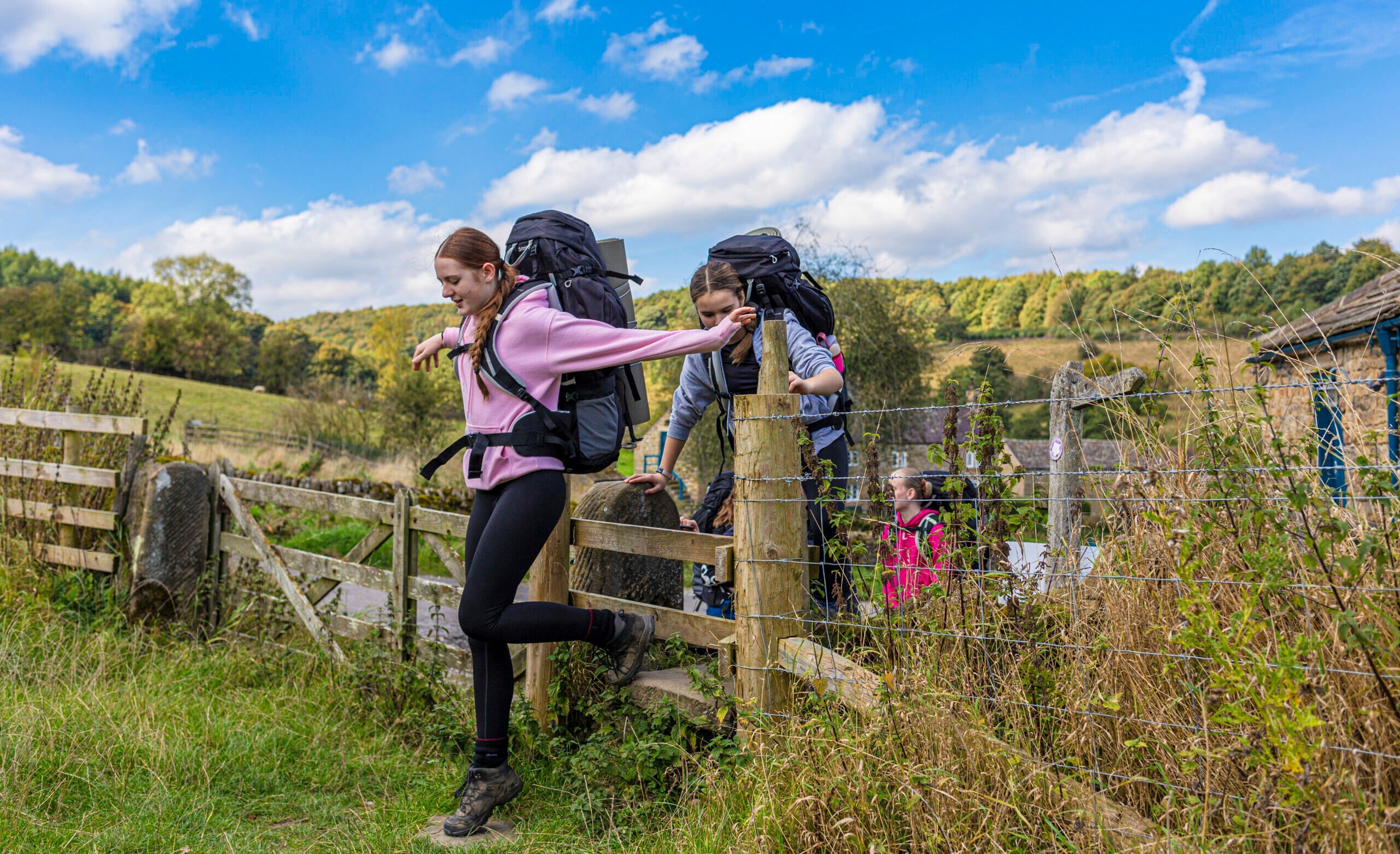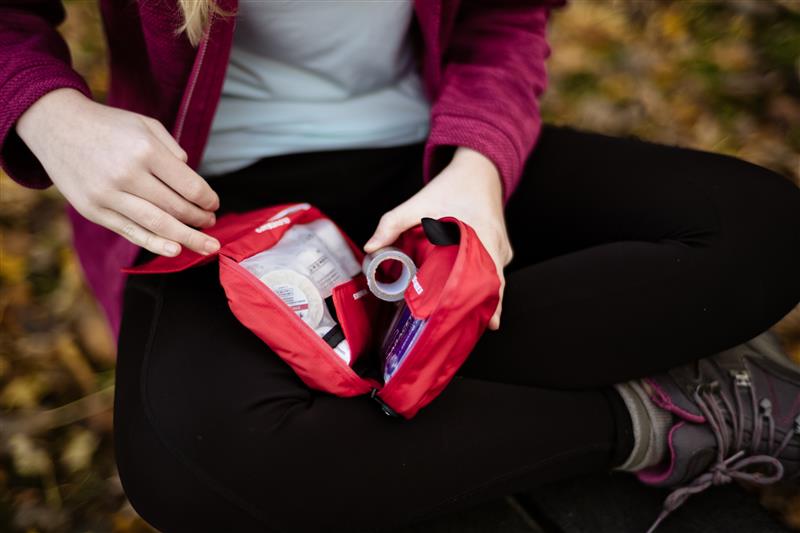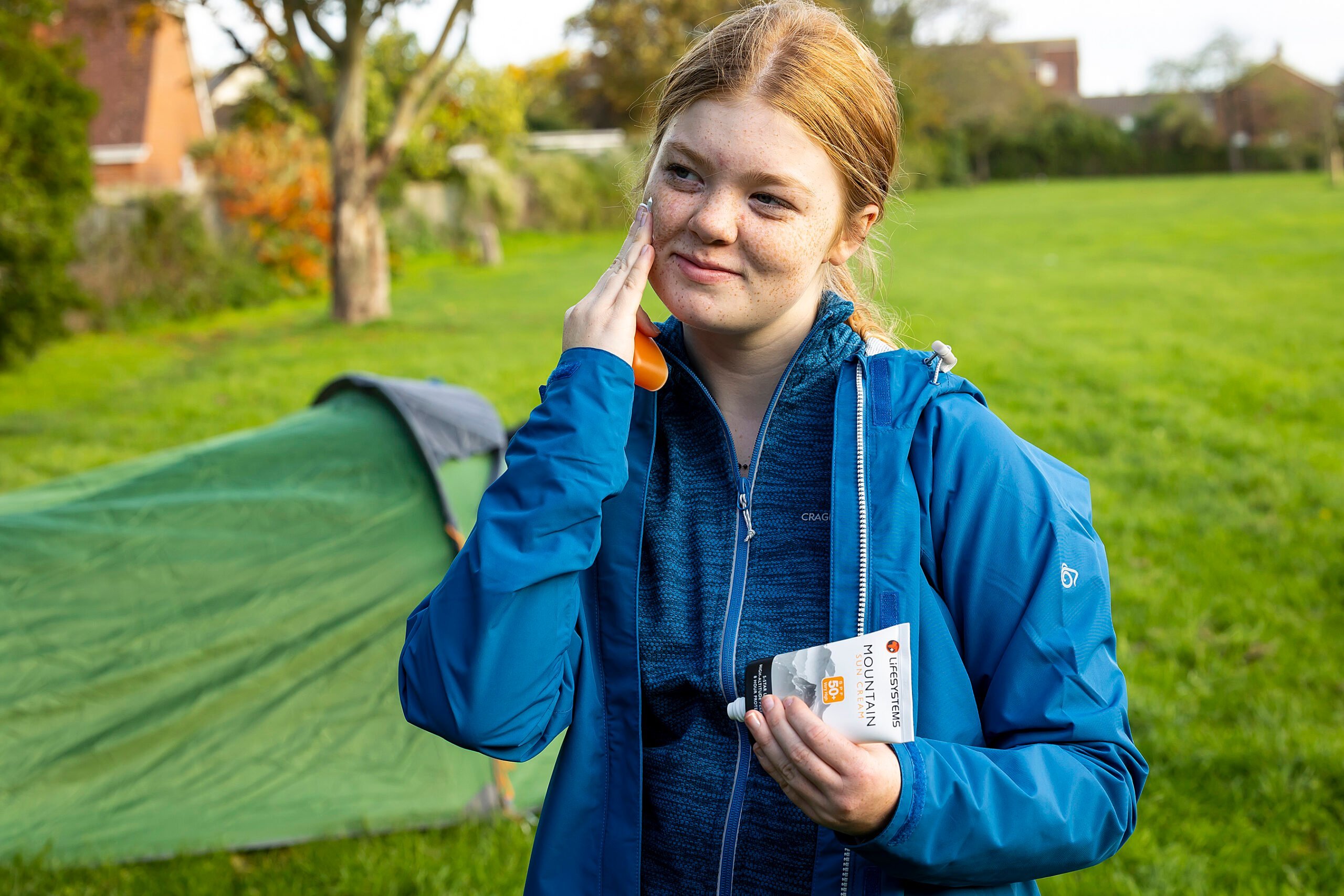First aid, health and safety on your expedition

Understanding how to keep yourself safe whilst in the outdoors, and how to act in an emergency is essential for your expedition. Having a first aid kit handy, as well as knowing how to use it will be invaluable for you and your group. Your most used items will be plasters, blister plasters and sun cream, so make sure your kit is in good supply of these items!
Our First aid kit poster will give you further information on what is in your kit and how to use it.
Below we’ve got some top tips on how to prepare, as well as how to keep clean and safe whilst out and about.
The prep
– Familiarise yourself with your first aid kit. Check that you’ve got everything you need and that it is all clearly labelled. We recommend Lifesystems Trek First Aid Kit
– Practice applying a bandage or a simple dressing.
– Note down details of the nearest hospital or rescue service for the area you are in. Hopefully you will never need to use it, but it is good to know!
– Include specific items for conditions, allergies or medicinal needs you might have on your journey. For example, antihistamines for hayfever!
– Bring a whistle so you can alert others to any emergencies. The Lifesystems Safety Whistle is a great choice.
– Preparing for poor weather on your expedition is sensible, especially if you are going into hills or mountains. The Vango Storm Shelter is bright with reflective tape so can be seen easily if the visibility is poor in rescue situations.
Top Tip – It’s a good idea to get to know your group and any health or safety needs they might have, so you can all look out for each other.
Keeping clean
– Not only do you need to keep yourself clean, but washing your food and gear are important too. Lifeventure All Purpose Soap will cover it all, saving space and weight in your rucksack.
– Practice your everyday health and hygiene habits whilst on your expedition, it will help to keep you feeling fresh and ready to go each day.
– Store all your health and safety items together in your rucksack, and keep wet and dry gear separate. Keeping things organised will make it much easier to find what you need while you’re on the go. Lifeventure’s dry bags come in all shapes and sizes and are a brilliant way to keep your items clean, dry, and organised – perfect for separating wet gear or protecting clothes from leaks and spills.
– Consider whether you need to bring make up or a shaving kit – it’s a few days at most.
Download our Health and hygiene poster for more information on what you might need to take with you on your expedition.
Top Tip – Pack some anti-bac to keep your hands clean and help prevent illness. You don’t need water, so it’s easy to use anytime, anywhere!

Out and about
– Even on cloudy days, harmful UV rays can still damage your skin – so sun protection is a must. Lifesystems Mountain Formula SPF50 offers strong, reliable coverage. Check out our final point for more essential info!
– You’re more than likely to encounter bugs and insects whilst on your expedition. To avoid any nasty reactions, prevent yourself from being bitten or stung with a strong and effective repellent such as Lifesystems Mosquito Repellent.
– Prevention is better than cure – pop some plasters on areas where you’ve had blisters before to protect your feet from the start. A Lifesystems Blister First Aid Kit is a great addition to your pack.
– You’ll need at least 2L of water a day – and keeping hydrated is so important. Lifesystems Chlorine Dioxide Tablets will help protect against bacteria, viruses and cysts – making sure your water is safe to drink. There is no noticeable after taste either! If you are refilling your water bottle from a river, ONLY do this if you have water purification tablets.
Top Tip – Multipurpose items and minis from supermarkets can help save space in your rucksack!
And lastly but by no means least – sunguarding on DofE expeditions
Ensuring proper sun protection is essential whenever the UV Index reaches 3 or above. Sunburn or dehydration can ruin a great expedition and pose serious health risks. Use a broad-spectrum sunscreen with an SPF of 30 or higher, ideally water-resistant, and reapply every two hours (more often if sweating or swimming), sunblock for lips, sunglasses, tightly woven clothing, and a water bottle. Before your journey, learn how to read the UV Index, when to apply sunscreen, and how to recognise signs of heat illness. Taking these precautions will help keep you and your team safe.
DofE Leaders play a crucial role in making sure their group is equipped and taking appropriate action. Why not speak to your DofE Leader about adding in a sunguarding session to your expedition training? By reviewing your kit, running sun safe sessions, discussing the risks of skin cancer, and encouraging teamwork in heat can build awareness and preparedness.
Sunguarding your expedition isn’t just about ticking a box – it’s about ensuring a safe and successful environment – and building good habits that will last a lifetime.
Check out the Melanoma Fund’s free Sunguarding Outdoors resource for sun safe guidelines. Their website is full of useful, informative content that highlights the importance of protecting yourself from the sun – definitely worth a visit! ? Home – Melanoma Fund UK






